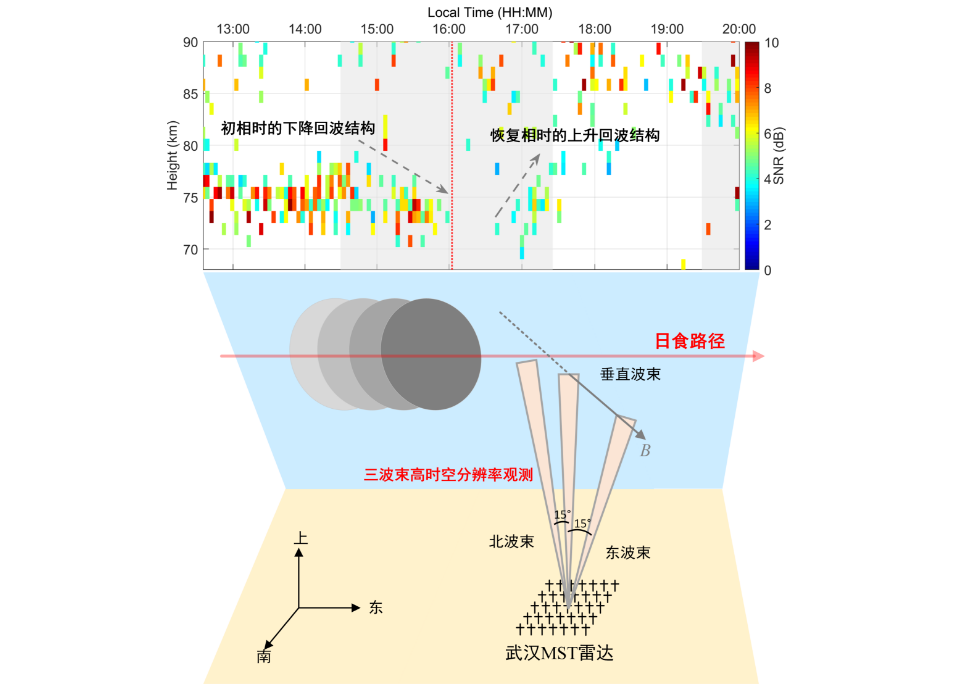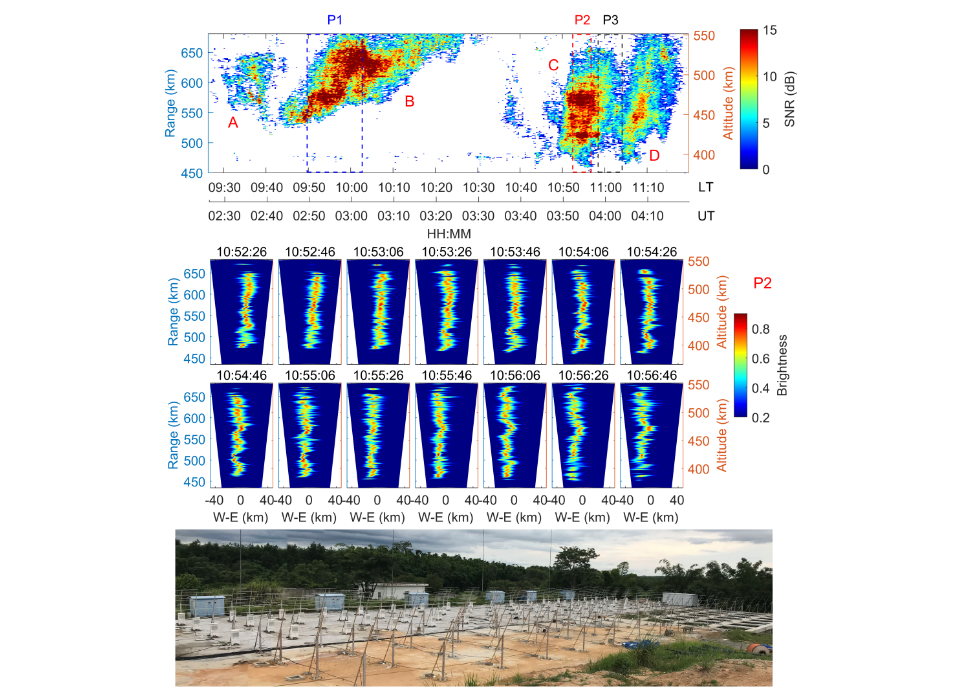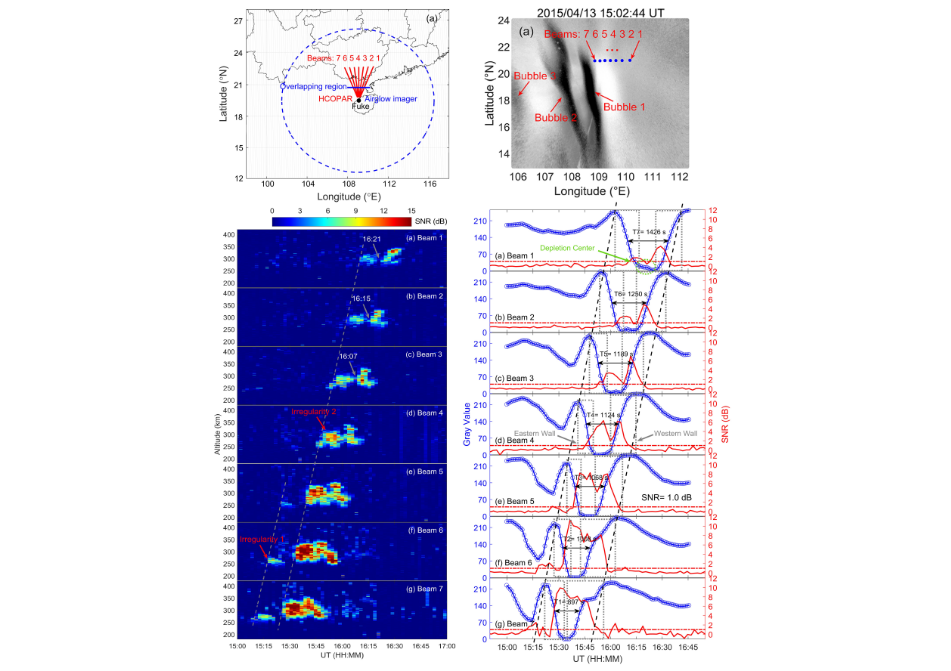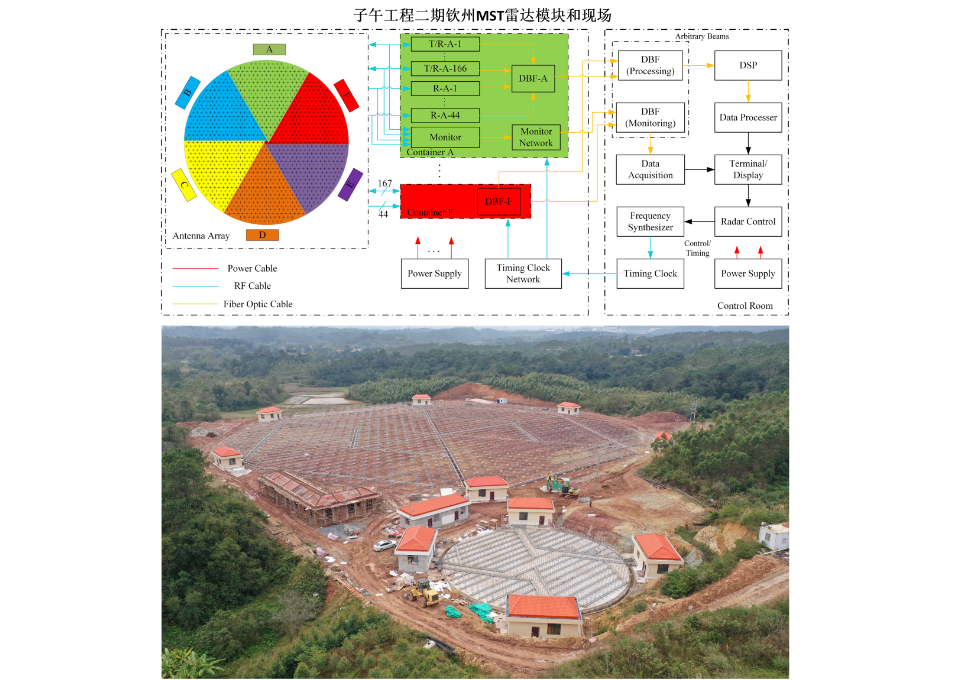Exploration of New Atmospheric Observation Radar System and Detection Mode
Members of the Meridian Project team, including researchers from Wuhan University and the National Space Science Center of the Chinese Academy of Sciences, have utilized the construction, upgrading, and operation of the Meridian Project MST radar and Hainan VHF radar to conduct numerous studies on detection technology and physical mechanisms in the detection of the middle and upper atmosphere and ionosphere using VHF band array radar. They have advanced space physics research by developing new detection technologies and improved observation equipment and detection technologies based on the needs of physical mechanism research. In 2023, they conducted a series of advanced equipment developments, technical implementations, and joint observations with various equipment. Their theoretical research and technical achievements have been published in several papers in "JGR: Space Physics," and this work has been recognized as one of the outstanding achievements of the Meridian Project in 2023.
Modern detection technology for the middle and upper atmosphere began in the early 20th century. With the development of radio technology and the successful development of radio sondes, detection heights rapidly increased from several hundred meters above the ground to the range of the troposphere and lower stratosphere. In the 1940s, advancements in sounding rocket technology further increased atmospheric detection heights to around 100 km, while the theory of radio wave reflection and scattering by air masses of different scales became increasingly refined. A large number of atmospheric remote sensing instruments, such as wind profilers, medium-frequency radars, meteor radars, acoustic radars, and lidars, were subsequently applied to the detection of middle and upper atmospheric parameters. Currently, the maximum detection height range for balloons and aircraft is about 30 kilometers, while satellites typically orbit at altitudes above 250 kilometers, rapidly circling the Earth, making long-term effective detection of a specific region's middle and upper atmosphere impossible. Sounding rockets are the only means of conducting in-situ detection of the middle and upper atmosphere, but they are costly and unsustainable. Ground-based remote sensing technology is currently the primary method for detecting the middle and upper atmosphere both domestically and internationally, with MST radars being the most powerful observational equipment for detecting the neutral three-dimensional wind field in the middle and upper atmosphere. Additionally, irregular plasma structures in the ionosphere, constrained by the magnetic field, scatter VHF band electromagnetic waves, making radars operating in this band suitable for observing field-aligned irregularities in the ionosphere.
The Wuhan MST radar and Hainan VHF radar are important radio observation instruments in Phase I of the Meridian Project. Both operate in the VHF band, providing long-term, continuous, all-weather observations of the troposphere-stratosphere-mesosphere atmosphere and ionospheric irregularities, respectively. During the solar eclipse on June 21, 2020, the Wuhan MST radar utilized a three-beam rapid rotation detection method to record, with high spatiotemporal resolution, the characteristics of the mid-latitude mesosphere’s response to rapid changes in solar radiation (Figure 1). Using the upgraded Hainan VHF radar interferometer array, researchers achieved the first domestic imaging of ionospheric irregularities (Figure 2) and recorded the gooseneck structure of daytime irregularities for the first time. By comparing observations from the Hainan VHF radar and an all-sky airglow imager, differences in the behavior of plasma bubbles and their internal irregular structures during dissipation were discovered (Figure 3).
Past theoretical and technical research results indicate the necessity of constructing a new multi-frequency, high-performance, and versatile software-defined radio array platform to meet the growing demands of technological evolution and space physics research. Supported by Phase II of the Meridian Project, the research team has built an advanced radio observation platform in Qinzhou, Guangxi (Figure 4). This platform consists of arrays A and B, covering an area of 50 acres, operating at frequencies of 50, 160, and 200 MHz, with a maximum transmission power exceeding 2 MW. It is the world's first MST radar using a fully digital array. The exploration of new equipment and technologies is expected to promote a series of original scientific research achievements.

Figure 1: High spatiotemporal resolution observation of mesosphere response to the solar eclipse by the Wuhan MST radar

Figure 2: Scatter echo diagram and corresponding radio imaging recorded by the Meridian Project Hainan VHF radar

Figure 3: Joint observation of airglow and scatter echo revealing the dissipation process of 3-meter scale irregularities in a plasma bubble

Figure 4: Module and on-site images of the next-generation antenna-level phased array MST radar of the Meridian Project Phase II
Download link for the original article:
1.https://agupubs.onlinelibrary.wiley.com/doi/10.1029/2022JA031008
2.https://agupubs.onlinelibrary.wiley.com/doi/10.1029/2022JA030878
3.https://agupubs.onlinelibrary.wiley.com/doi/10.1029/2022JA030892
4.https://agupubs.onlinelibrary.wiley.com/doi/10.1029/2023JA031856
5.https://agupubs.onlinelibrary.wiley.com/doi/abs/10.1029/2023JA031890
